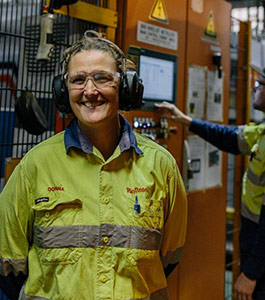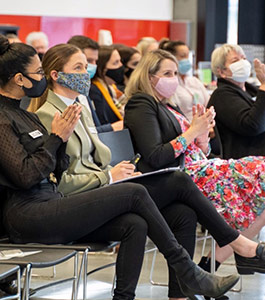
Wellbeing programs are great ways to allow your employees to tap into to promote wellbeing. Some employers have reported only 10% participation in these initiatives, so how to employers ensure they create or adjust wellbeing programs to make them effective? This blog will aim to address introducing fun, empowering and practical elements that cultivate a positive team culture, driving productivity and employee engagement, and turns health and wellness into part of the team’s daily habits.
What are Wellbeing Programs?
Health and wellbeing programs (HWP’s) are prevention-based strategies that businesses can choose to implement to improve the overall wellbeing of individual workers as part of the business’ overall strategy in improving mental wellbeing. This can combine your efforts in how you organize work, change the working environment and culture, actively engage with workers for personal development and help them make healthy choices. In actively creating a physically and mentally healthy workplace, a business can not only improve the health of a worker but also improve engagement and productivity.
HWP’s are usually delivered via a three-pronged strategy: one aimed at work health, safety and environment, committing to voluntary health practices, as well as organizational change:
- WHSE – Is a prevention-based management of risks to health and safety at the workplace, overall aimed at eliminating work-related injuries, illness, disability and death. It also incorporates effective management of environmental issues such as ergonomics, chemical hazards, air quality and so forth
- Voluntary Health Practices – A prevention-based management strategy of assessing worker illness, lifestyle behaviours, and raising awareness, educating and providing a supportive environment in which healthy lifestyles are promoted
- Organisational Change – Is a prevention-based management of risks to worker mental wellbeing, whereby the organization commits to, actions and reinforces positive and holistic policies and procedures, work organization, workplace practices, environment and culture, as well as focusing on diversity and inclusion best practice1.
Together, they provide a powerful, holistic strategy to provide tangible benefits to your team.
What would be in a Typical Program?
A program can incorporate some really simple strategies, or become rather robust and developed depending on the size, aims and requirements of your business.
In a smaller business, you might opt to:
- Provide healthy food and drinks in the tearoom
- Incorporate discussions and training around stress, work life balance, improving the ways that you work, conditions and many other mental wellbeing strategies into your toolbox sessions
- Providing support and/or third party assistance to workers experiencing personal health issues
- Supplementing gym memberships or organizing fitness sessions for your team.
Or in a larger business:
- Wellbeing initiatives and resources (awareness weeks, healthy cooking sessions, nutrition classes, discounted/corporate memberships)
- Employee Assistance Programs (EAP’s)
- Online resources of health information
- Health screening and risk assessments
- Training and development for leaders and workers
- Flexible working arrangements
- Establish a wellness committee.
If at first it doesn’t succeed…
If you’re reading this thinking “but we’ve done this, and it didn’t work” you’re not alone. Studies show only 10% of workers usually tap into employee assistance programs, and some initiatives die out quite rapidly.
The issue lies in supplying areas of assistance that are meaningful to workers, getting their buy in, as well as continuously encouraging participation. Tap into your existing knowledge of areas for improvement, and encourage your team to think of some other ways that could benefit the team – is there an issue with getting enough sleep or have poor work/life balance? Are some workers getting stressed out and anxious over their conditions, hours and/or work volume? Does poor diet or smoking need to be addressed? How about work performance or risks to safety? Or perhaps you’ve noticed that your team or individuals are showing signs of poor mental health and may require support and counselling. Are there some areas where diverse groups are not being included that need to be addressed as a priority?
Another area is getting the right support in the first place. Is the Executive Sponsor behind these programs? Are workplace supervisors on board with it, participating in these activities and actively encouraging and supporting their team to get involved? Without high level support and commitment, employee programs won’t last the distance.
Write your thoughts down, record your team’s input and think about what you can address short term and long term. Can you organize healthy snacks to be available, or start training sessions to address critical mental wellbeing or safety issues, organize vaccinations at the workplace, and perhaps allocate some time to cover some activities to reward your team for their efforts? Long term, can you implement regular prevention-based mental wellbeing training sessions, update and commit to continuous improvement in your workplace health and safety practices and procedures, fund exercise sessions for the team, commit to leadership development as well as organize for development sessions for each of your workers? Be realistic in your goals, as the program is a long-term strategy to improve the wellbeing of all your workers – some things may work, and some things may need to be replaced if they’re not working. Make sure the solutions are tailored to the needs of your business and your employees, and keep getting them involved and committed to the overall aims.
Another issue that might be affecting participation is lack of inclusion for diverse workers. Remember, one size doesn’t fit all, and you’ll need to think about catering for a range of diverse individuals in your team. consider the individuals within the business within group or team programs – how are they catered for, and whether they will feel included or not. You may want to consider mixing up events and fitness sessions, the types of training and discussion sessions you take, the way it’s presented as well as ensuring that everyone feels like they can comfortably participate.
If you’re still stuck, there are a great range of organisations that provide tailored wellbeing programs to suit your business.
Once you’re happy with the plan, that it all fits within the business budget, your team has been actively involved and you have the right supports, make sure you communicate the rollout to your team. Once active, keep track of the response, how the programs can improve and checking back with your team to get their feedback as well as repeat key messages2.
We hope you’ve enjoyed the article, and have some positive strategies in mind that you can take back to your team for discussion and implementation. Our Mental Wellbeing article series will continue to focus on prevention-based mental wellbeing topics, and how diversity and inclusion can bring about many benefits in your workplace.
- Comcare, Effective Health and Wellbeing Programs, September 2010.
- SHRM, How to Establish and Design a Wellness Program, https://www.shrm.org/resourcesandtools/tools-and-samples/how-to-guides/pages/howtoestablishanddesignawellnessprogram.aspx, accessed February 2021.





